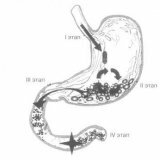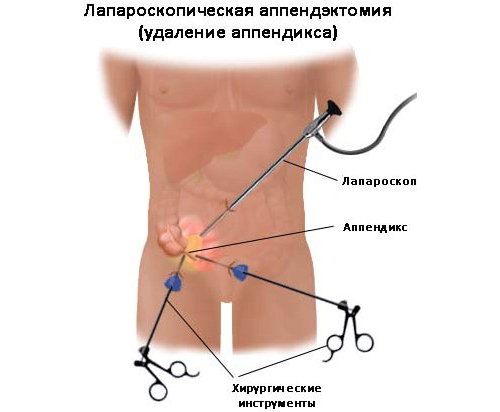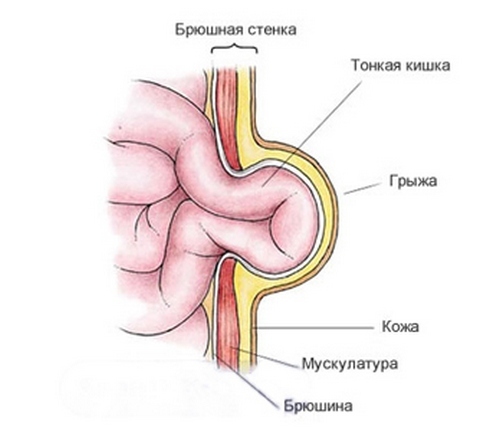Secondary pancreatic insufficiency

Food digestion is the splitting of more complex product structures into simpler, easily digestible intestines. Even small changes in the process of digestion of food can lead to a deficit or accumulation of excess weight. As a rule, problems associated with digestion of food are accompanied by gastrointestinal diseases, so they are often found in clinical practice.
Dyspepsia, or digestion disorder of food, is often the cause of an unbalanced diet with excess fat and carbohydrates. First of all, because of the disturbance of the digestive processes, the negative influence affects the enzyme system and the pancreas.
In nature, there is a primary and secondary pancreatic insufficiency. The cause of primary pancreatic insufficiency are severe pancreatic diseases such as: chronic pancreatitis, pancreatic fibrosis and incomplete pancreatic passage.
In medical practice, there is more common 2nd pancreatic insufficiency, the cause of which is excessive intake of food or its "unusual".
Secondary pancreatic insufficiency is more common in pediatric practice. Her diagnosis is often difficult because of the vagueness of symptoms when using instrumental methods. Therefore, for correct diagnosis and timely adequate treatment, doctors should take advantage of the whole arsenal of funds at their disposal. With secondary pancreatic insufficiency, the localization of pain occurs in the epigastrium, the pain itself is shrouded or irradiated to the left scapula, back or hypochondrium. Often, the pain syndrome is accompanied by a violation of the stool and symptoms of intestinal dyspepsia, as well as rumbling and swelling of the abdomen. With diarrhea, the stool is frothy, liquid, plentiful, light yellow due to its high fat content. A distinctive feature of nausea in gastric dyspepsia is that it does not bring relief.
Pancreatic insufficiency leads to a restriction of food assimilation, which can also lead to a violation of absorption processes.
History of the development of drugs based on pancreatin.
In the treatment of pancreatic insufficiency, preparations containing enzymes are used. The traditional enzyme is pancreatin, which is a drug based on the pancreas of animals, usually domesticated. The history of pancreatin dates back to the beginning of the twentieth century, when patients were prescribed powder from the dried pancreas of cattle. However, due to the high level of acid formation in the stomach, the drug was inactivated and lost some of its medicinal properties.
In the process of further development of the pharmacological industry and knowledge of the processes of digestion, new forms of drugs began to appear. Pancreatin in them was contained in the form of dragees, tablets, granules and microspheres, placed in a capsule with a protective coating.
Requirements to be met by preparations containing pancreatin:
- No toxins;
- Good degree of portability;
- Absence of harmful side effects;
- The effect of the drug should be in the range of 5-7 pH;
- Resistance to hydrochloric acid and other proteases;
- Long shelf life;
- The drug should be with a high level of active digestive enzymes;
Currently, depending on the composition of enzyme preparations are divided into several groups:
- Pancreatic enzymes( trypsin, amylase, lipase);
- Extracts based on the gastric mucosa( pepsin);
- Combined enzymes. In them pancreatin is contained together with the components of hemicellulose and bile.
Secondary pancreatic chronic failure is treated by all three groups of enzymes, but each group has strict and clear indications for use, which we will discuss below.
Extracts based on the gastric mucosa.
As a rule, their action compensates for malfunctions of the gastric mucosa. The peptidases found in their composition, pepsin and cathepsin cleave natural proteins, which assists their assimilation in the body. Preparations based on extracts are used primarily for gastritis and are not recommended for diseases caused by high acid formation.
Pancreatic enzymes.
Drugs in this group regulate the functions of the pancreas. They are used both for treatment and as prophylactic agents. Differences in the structure of enzymes contribute to the diversity of their medical applications. So, lipase accelerates the hydrolysis of fats, amylase decomposes pectins and starch, proteases help in the cleavage of peptides and proteins, and active trepsin has an analgesic effect.
Combined preparations.
Creates favorable conditions for complete and operative cleavage of carbohydrates, proteins and fats in the duodenum. Hemicellulose helps stabilize intestinal microflora, as well as cleavage of plant fiber.
Indications for use:
- liver pathology with insufficient function of external secretion of the pancreas;
- sedentary lifestyle;
- Chewing dysfunction;
Drugs of this group can not be administered to patients with elevated levels of bilirubin in the blood and signs of intestinal obstruction, since the misuse of these drugs, for example, festal, leads to the development of diarrhea.
Thus, each of the groups of enzyme preparations has only its own, strictly indicated indications for admission. Appointment of drugs in the redistribution of indications contributes to the normalization of digestion and the recovery of the patient. An incorrect prescription of these devices leads to their discrediting and the lack of a positive effect, but in the worst development of the situation and to adverse consequences with the deterioration of the patient's overall health.



